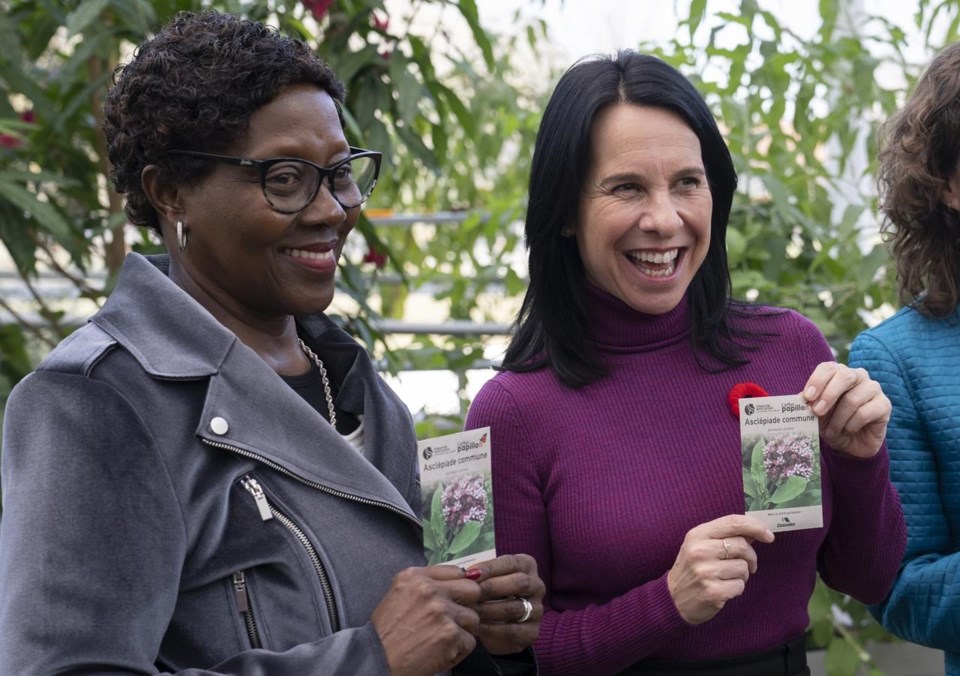Montreal is promising more green space, less grass mowing and more bee-and-butterfly-friendly gardens as part of a multi-year plan to help pollinators, as the city prepares to host a major UN biodiversity conference next month.
Mayor Valérie Plante said Wednesday that the city is committing to increase the amount of protected land from eight per cent of the city's total area to 10 per cent by 2030 and create at least five corridors to link natural areas.
The city is also planning to give insect populations a boost by reducing mowing on city land, revising rules that limit where citizens can grow flowers and vegetables and handing out milkweed seeds for people to plant.
"When it comes time to protect biodiversity and the food chain, pollinators are extremely important because a third of the global food chain depends on pollination," she told reporters who gathered at the Montreal Insectarium.
The announcement comes as Montreal prepares to host the UN Biodiversity Conference, known as COP15, next month.
Plante said the push to protect biodiversity is more important than ever as the world is faced with "a critical loss of biodiversity" that some scientists have likened to a sixth mass extinction event. She said she was particularly shocked to hear that scientists have estimated that global wildlife populations have plunged 70 per cent since 1970.
"As the majority of the population lives in urban areas around the world, cities have a major role to play in biodiversity and maintaining quality of life," she said.
Elizabeth Maruma Mrema, the executive secretary of the UN Convention on Biological Diversity, told reporters that nearly 90 per cent of the world's wild flowering plant species depend on pollinators, making them key to global biodiversity efforts.
"Despite that dependence, unfortunately, the same pollinators have drastically declined, mainly due to drivers such as habitat fragmentation, land use change, agricultural industrial chemicals and pesticides, herbicides, diseases, invasive alien species, climate change, intensive agricultural practices, and the list goes on," she said.
Maruma Mrema said the COP15 conference's goals include the adoption of a global biodiversity framework laying out actions to reduce negative human impacts on pollinators, including targets to reduce pollution and pesticide use.
She said one of the framework's targets pertains specifically to green spaces and urban development. But she said many of the issues the conference will tackle — as well as their solutions — originate in cities, ranging from pollution and water consumption to innovation and scientific knowledge.
The City of Montreal said the goal of protecting 10 per cent of its land will require it to acquire another 1,000 hectares of territory, which is approximately five times the size of the city's Mount Royal.
Plante said Wednesday that the city has dedicated $300 million to buying land for parks, with a focus on land alongside rivers and in the city's east end. She said the city is also hoping to acquire some federally owned open land near Montreal's airport.
All too often, Plante said, the city is forced to buy and rehabilitate former industrial lands, which is both costly and complicated. "So any opportunity we have to (buy) a remaining wild green space, we should take it," she said.
She said the city will also work with the boroughs to revise bylaws that sometimes limit people from letting their grass and flowers grow too high, or don't allow them to have vegetables in their front and side lawns, in order to provide better environments for butterflies and bees.
This report by The Canadian Press was first published Nov. 9, 2022.
Morgan Lowrie, The Canadian Press



